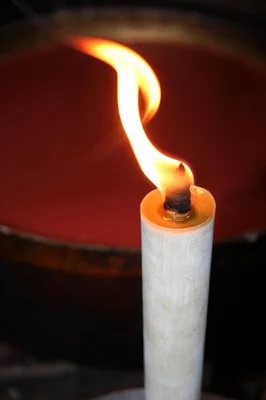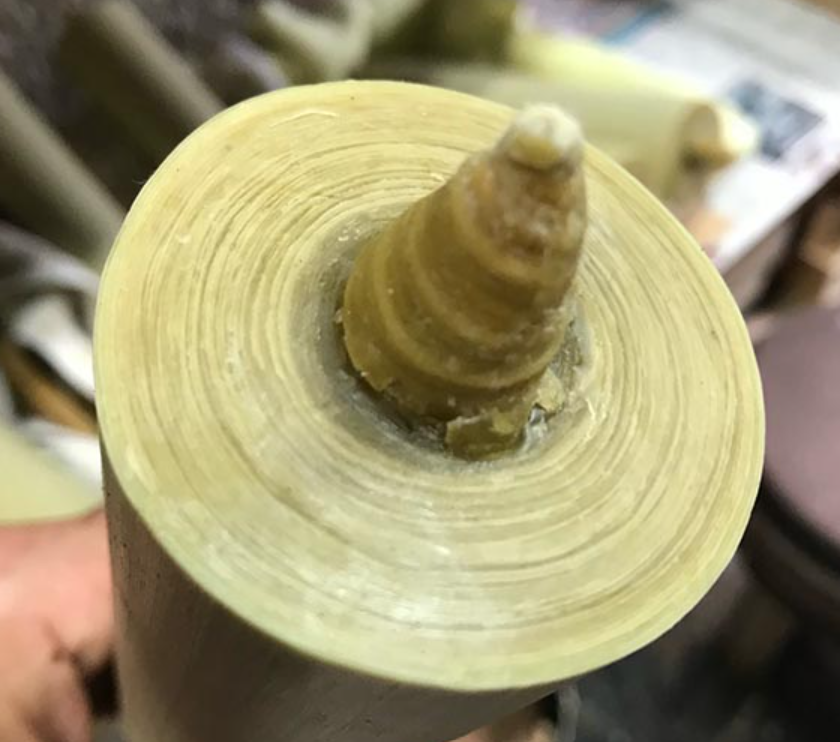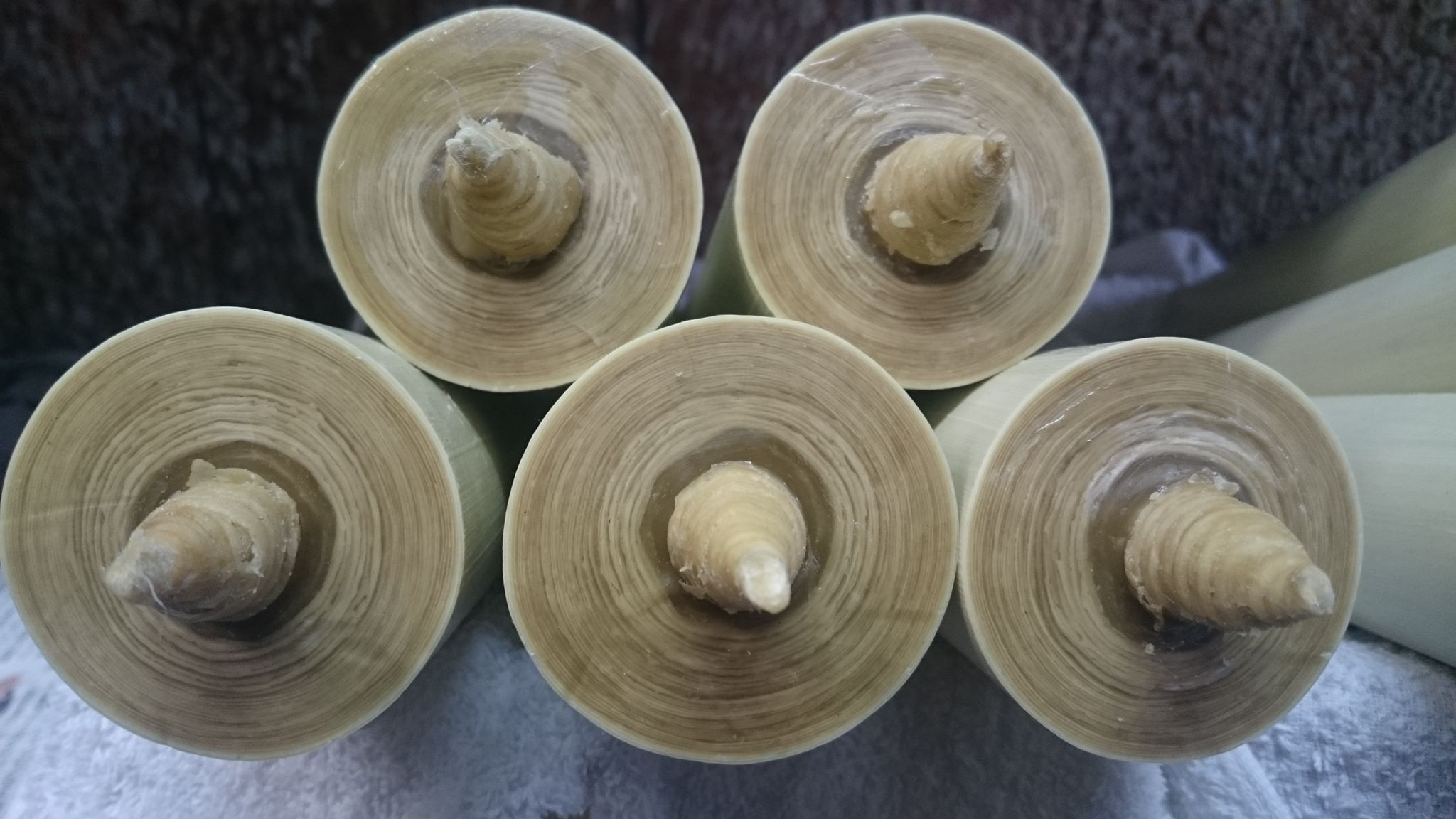
WAROSOKU
People often assume the difference between Japanese and Western candles is the shape. It is true that the often used Ikari shape - wide at the top and narrow at the bottom - is a distinguishable feature of many Japanese candles, but that is just the beginning of what makes them special.
To really understand warosoku (wa= Japanese,
rosoku= candles) and appreciate the art,
you must look at the inside!

One important unique feature is the is the wick.
Most western candles have a thin cotton string, whereas authentic Japanese wicks are made from Japanese paper (washi) wrapped in Igusa grass (used for tatami matts) and cotton fibers.
This creates a much larger, warmer flame that dances around for hours.
The history of Japanese candles dates back to the 14th century. The traditional methods and ingredients have remained the same over the years, which also means there are just a small number of craftsmen left able to make them.
Warosoku have always been an important part of Buddhist temples and altars. As the Buddhist lifestyle prohibits intentionally killing animals, these candles are completely plant-based and vegan.
Where most Western candles rely on beeswax or animal fat, warosoku are made with plant derived fats called Mokuro,which is grown in Southern parts of Japan with a warmer climate.
This wax is mainly used for Warosoku and bintsuke, the mix to dress sumo wrestler's hair,
and is made in small batches by traditional makers. As with many traditional crafts industries, both the traditional wax producers and the warosoku masters are struggling to survive; one cannot continue without the other.

To be classified as an authentic Warosoku, the candle must be "clearly stated to be manufactured with domestic pure vegetable wax" and "all processes are done manually". One way to check this is to look at he tree-rings (looking like baumkuchen), as this effect can only be created by rolling them by hand and not by using a mold.





